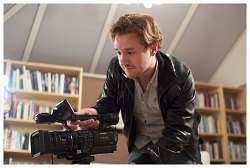Say, for example, that you know questioning is a particular weakness for you. You’ve been told that you are predominantly posing closed questions which aren’t developing your class’ thinking or understanding of the topic. If you were to video yourself, you could then pick apart your use of questioning in a very precise way. How long am I giving for thinking time? Where am I standing when I ask the questions? Which students do I ask to answer questions? Am I asking probing, clarification or recommendation questions?
A colleague of mine recently videoed herself in order to improve her distribution of questions by analysing where in the classroom she was standing when asking questions to students. She noticed a particular tendency to ask questions in a certain area of the room which made it less likely for students further away to get a chance to speak. As a result of a deliberate effort to walk beyond her ‘comfort zone’, she encouraged discourse from other students and acquired a better grasp of how they were progressing.
Recording yourself teaching means you can revisit certain parts over and over again. You can make notes whilst you’re reviewing it so that you are analysing your practice in detail rather than relying on your memory. If you record yourself in lessons periodically, you will hopefully be able to observe the marginal gains in your practice over time and see how feedback and even small changes in specific areas can make a huge difference.
You don’t have to share the video with anyone else, but it is often very useful to also get a colleague or two to observe the aspect of teaching you aim to improve on. You will then be able to see if the details they commented on correspond with your initial concerns about your teaching style. Finally, videoing yourself takes little time and effort, and allows more freedom to choose a mutually convenient time with your observer.
Once you become accustomed to your voice, and start to notice your posture and how on earth you managed to miss the students talking at the opposite side of the room, video-recording becomes an invaluable tool for reflection.


















